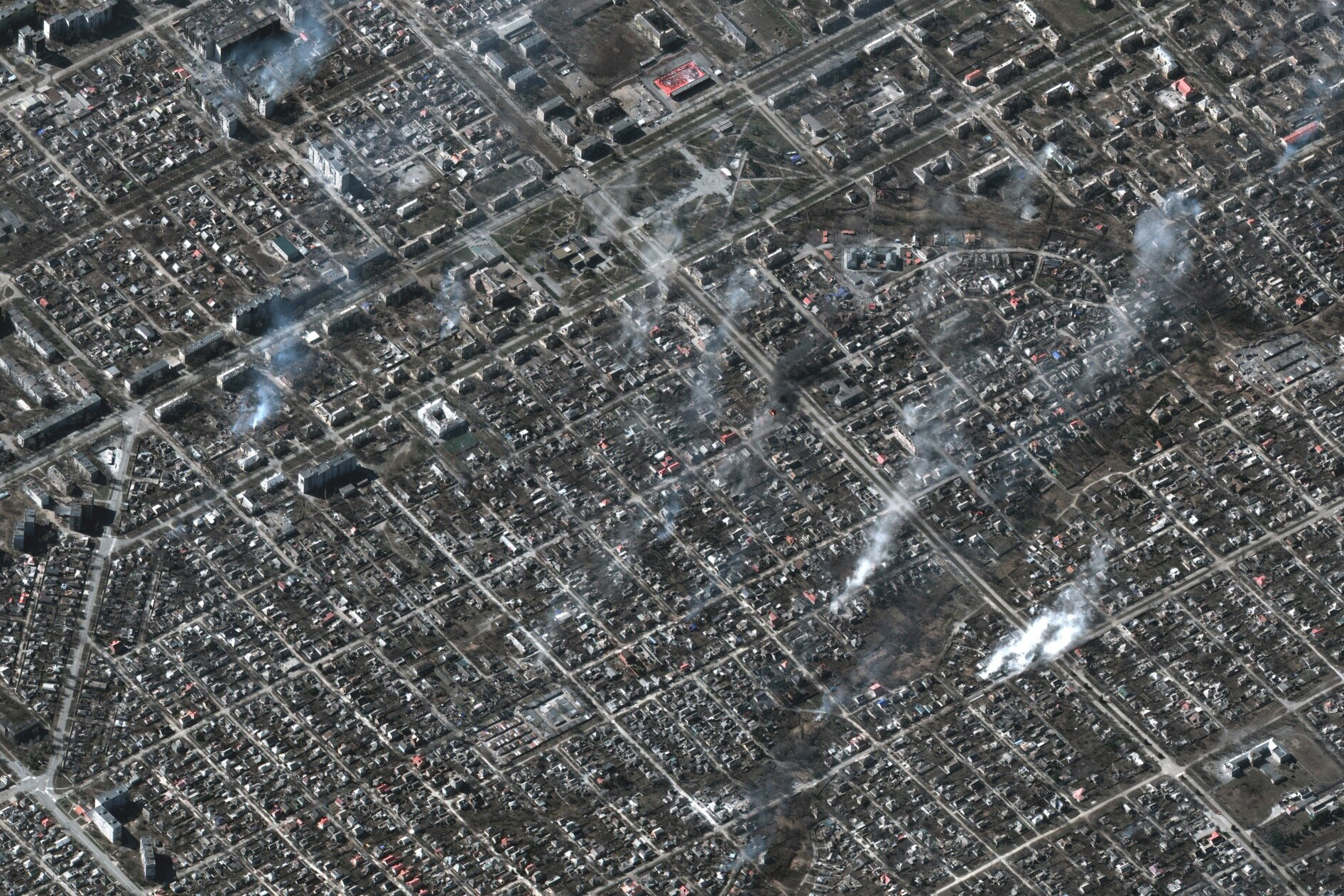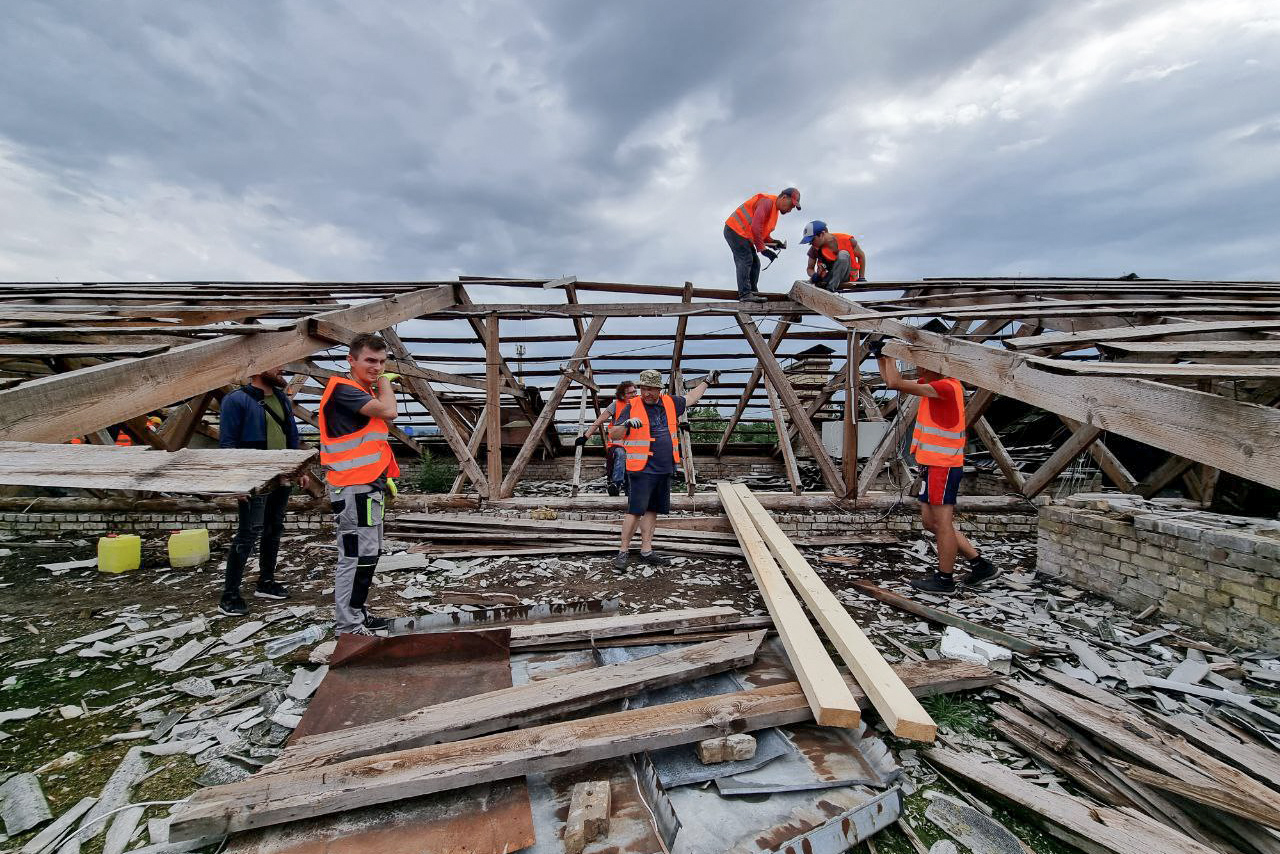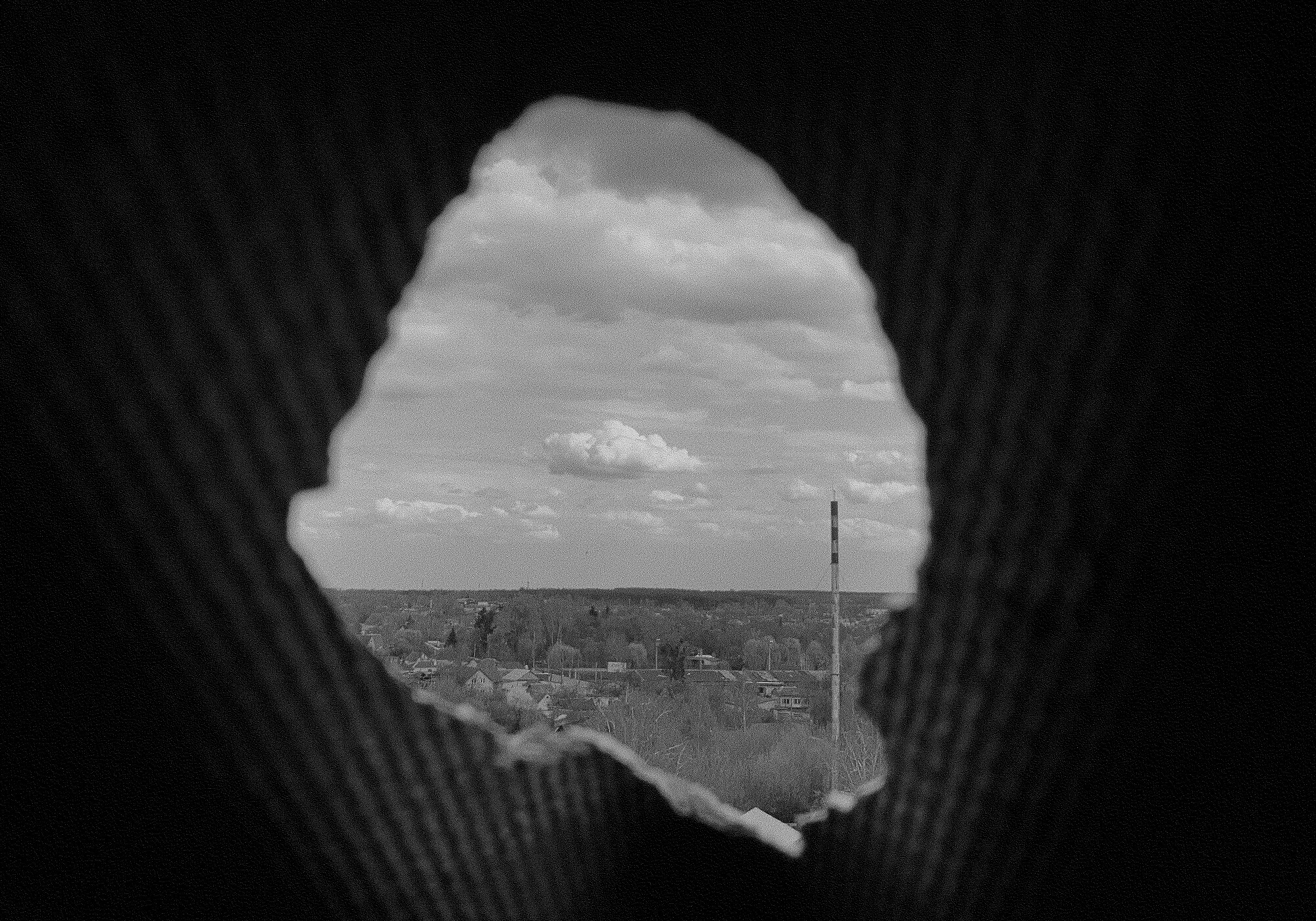14 Years after the War: Russia’s Efforts to Reconstruct South Ossetia
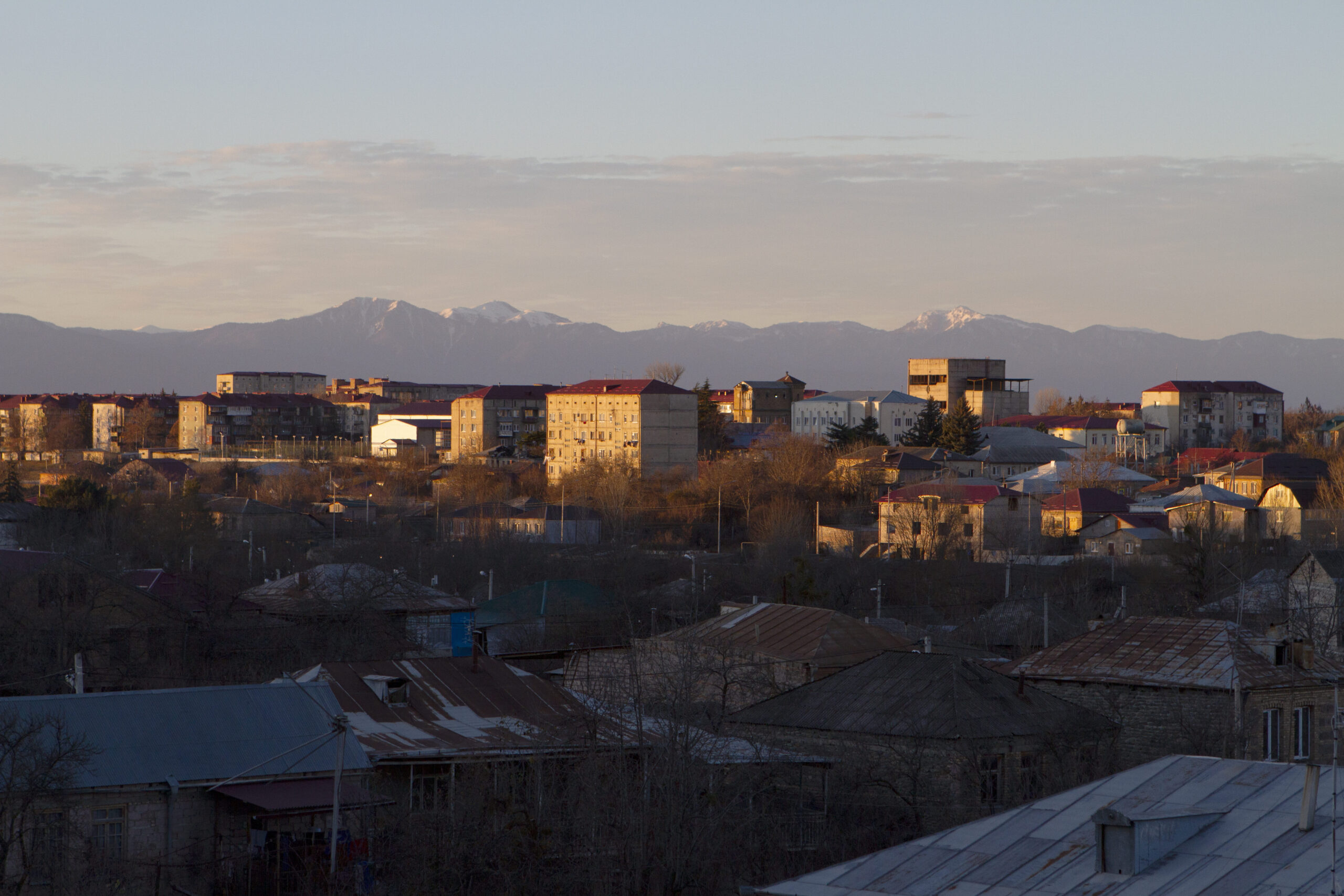
14 YEARS AGO, ON AUGUST 12, THE FIVE-DAY WAR INVOLVING RUSSIAN AND GEORGIAN TROOPS CAME TO AN END IN SOUTH OSSETIA. THE MILITARY CONFLICT SERIOUSLY AFFECTED THE LIFE OF THE REGION: THOUSANDS OF PEOPLE LEFT THEIR HOMES, EVERY TENTH BUILDING WAS DAMAGED, AND BY NOW, ALMOST 90% OF THE PARTIALLY RECOGNIZED REPUBLIC’S ECONOMY IS BEING FINANCED BY RUSSIA. PYL FOUND OUT HOW SOUTH OSSETIA HAS BEEN RECOVERING AFTER THE WAR AND WHAT HAS CHANGED SINCE 2008.
“My grandad watched Georgian television non-stop, waiting for what would happen next,” says Inga, who was thirteen when the military conflict between Georgia and South Ossetia began.
“On August 5, there was very heavy shelling, and for the first time in many years, my mother asked me to go down to the basement. All the children from my family were evacuated the next morning. On August 7, it all started at night,” she recalls the days on the eve of the war.
The conflict between Georgia and South Ossetia escalated anew on the night between August 7 and August 8. The confrontation grew into a large-scale war with the participation of Russian, Georgian, South Ossetian, and Abkhaz armed forces. As a result of military actions, more than 100,000 civilians on both sides were forced to leave their homes; 850 people died. On August 12, the authorities reached a ceasefire agreement. Two weeks later, Russia recognized the independence of Abkhazia and South Ossetia. Later, Nicaragua, Venezuela, Nauru, Tuvalu, Vanuatu, and Syria followed suit.
About 80 percent of Tskhinvali’s buildings were damaged during the war. In South Ossetia, approximately every tenth building was ruined beyond repair, and around ten settlements on the border were completely destroyed.
The destruction of Tskhinvali was strongly influenced by its geographical location. “The city lies in a hollow. From the military point of view, if you occupy the surrounding heights and start shelling it, it’s just an ideal target,” recalls Soslan Dzhusoev, a former adviser to the President of South Ossetia. “At first, I walked around Tskhinvali with a feeling that everything was totally destroyed. Some houses had smoke billowing out of them. In others, the windows were shattered by debris, or the roofs were torn out.”
One month after the end of the conflict, when Inga returned to Tskhinvali, the city was still in a semi-dilapidated state. “Our city is small, on the way to school you pass a lot of meaningful places. When we returned, they were simply gone. The cafe where I celebrated my 13th birthday burned to the ground. My uncle’s apartment burned down after it was hit by a shell; there was a huge hole in the wall.”
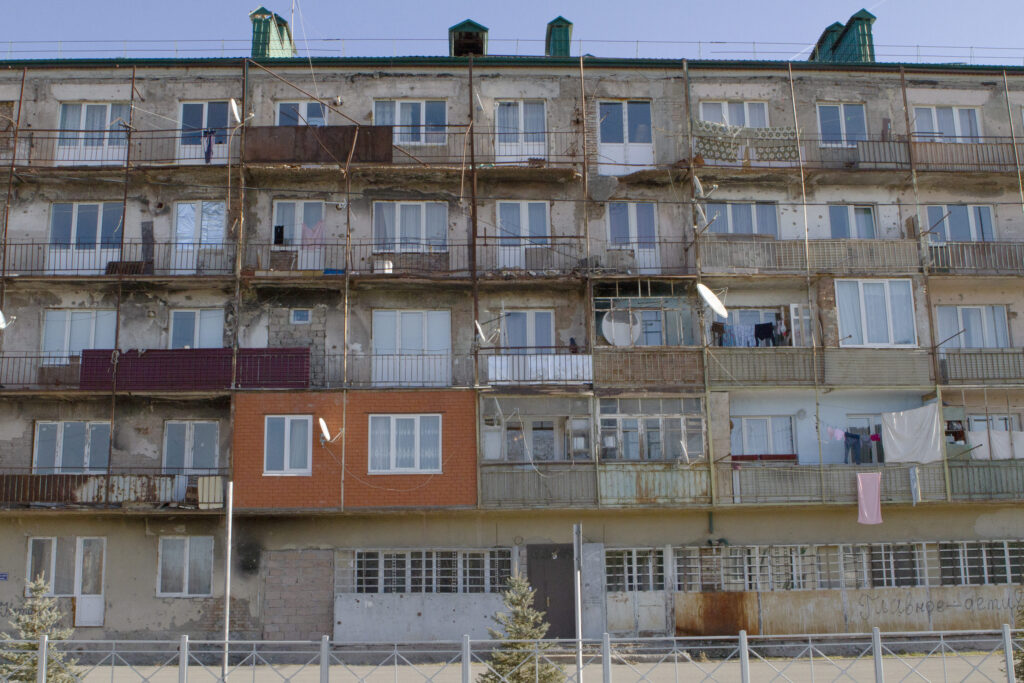
THE CREEPING BORDER
Upon Russia’s recognition of the South Ossetian independence, among the main consequences is the new border between the partially recognized republic and Georgia. Amnesty International reported that Russia has been carrying out gradual “borderization” since 2009. Georgian authorities accuse the country of creeping annexation due to the border’s constant movement. According to them, by the end of 2018, 34 villages were separated by barriers that deprived residents of access to farms, pastures, irrigation water sources, and village cemeteries.
In 2013, a whole street was cut off from the village of Gugutiantkari, separated by a green border sign saying “State Border of the Republic of South Ossetia.” Six years later, wire fences were installed on the demarcation line. Most of the houses ended up on the Georgian territory. On the land that was left behind the fences some people still had crops.
In the past, the residents living close to the border could go from South Ossetia to Georgia with special passes, through four checkpoints. In the spring and summer, there were almost daily detentions of people who attempted to cross the demarcation line illegally—residents were stealthily trying to take care of crops and tend their livestock. Between 2008 and 2018, more than 1,200 people were detained at the border.
Since 2019, the border has been completely closed. Exceptions are made only for religious holidays, with local authorities opening checkpoints for a few days at a time. As such, the border was opened in April for four days around Easter, and in June, for the religious holiday of Lomisoba (Lomisi Dzuar). On other days, you can get to Georgia only through the Russian territory.
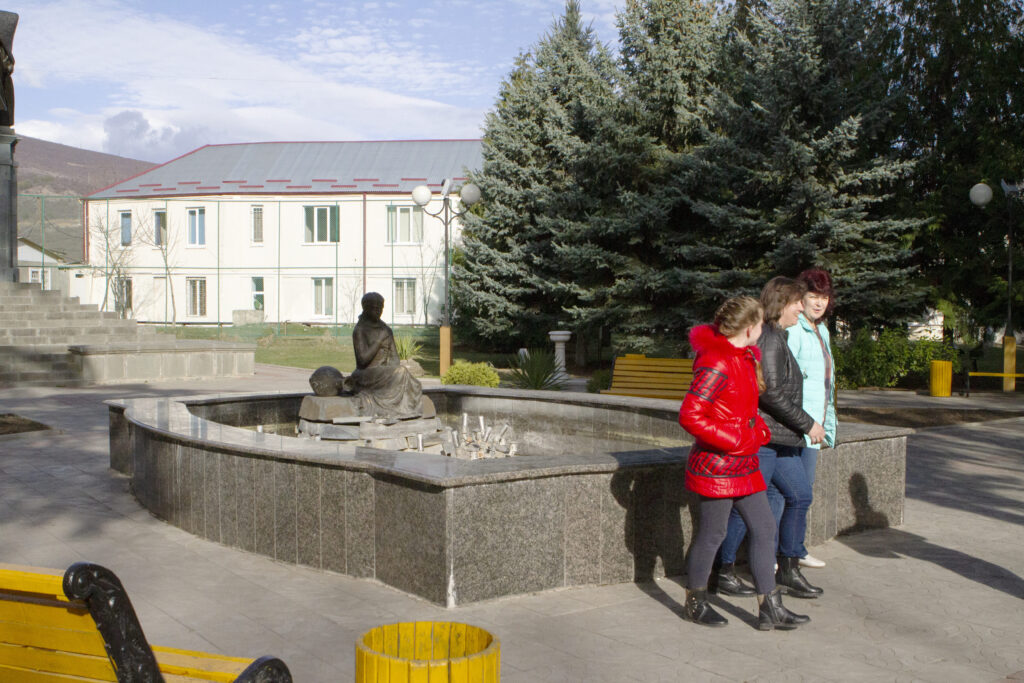
ERGNETI MARKET
Before the partial recognition of the independence, the South Ossetian economy to a large degree relied on the smuggling of fuel, agricultural products, and other goods from Georgia to Russia and back. The role of an intermediary in this process was played by the Ergneti market, located not far from Tskhinvali. In 2004, the volume of the market’s trade was estimated at 101–133 million dollars. It was a source of income for thousands of Ossetians and Georgians who traded side by side, despite the war in the 90s.
“It was a grey market with a lot of contraband items. The republic’s economy was largely shaped around the smuggling transit through South Ossetia. Merchants paid taxes, the budget formed around these financial streams, and people earned money,” says journalist Murat Gukemukhov describing the trade at the Ergneti market.
In 2004, Georgian authorities closed down the place. For some time, occasional merchants continued to trade right next to the post of Georgia’s Ministry of Internal Affairs. Four more years later, the five-day war began decisively changing the South Ossetian economy in its aftermath. Now, the republic’s budget is almost 90 percent made up of the funds alloted to it by Russia.
Former President Anatoly Bibilov stated in 2022 that Russian citizens make up about 95 percent of the South Ossetian population. This allows the residents to access Russian medicine, education, and financial subsidies.
Now, South Ossetia practically lacks an economy of its own. In 2021, more than 80 percent of the residents were employed in the public sector. “The amount of state employees in South Ossetia is inflated to the point of obscenity. This just might be the most reasonable out of all legal ways to employ a significant part of the population. On the other hand, the state employees have always been a fairly loyal electoral army for the president, receiving funds from the budget,” says Ruslan Totrov, the political editor of the North Ossetian edition of Osnova.
According to the journalist Murat Gukemukhov, South Ossetia, which has an official population of just over 50 000 people, developed a system of governance just like the Russian one over the past five years. “The government apparatus is 200 people, the presidential apparatus is more than 100 people. These are all attributes of a large state which, in turn, means a huge number of jobs in the public sector. Very quickly people began to neglect the business sector. Everyone wanted to get into a public organization,” says Gukemukhov.
THE FIRST TOWNHOUSES AND MOSKOVSKY MICRODISTRICT
The main problem for the reconstruction of Tskhinvali after the war was an acute shortage of housing, with most residential buildings having been destroyed during the war. By the start of the winter season in 2008, about 100 families had nowhere to live, so they had to set up tents in their yards or at their neighbors’. “Ossetia has a very communal society, we always help each other out. For instance, we do not have homeless people because distant relatives or neighbors can always give you shelter. After the war, someone lucked out and was able to settle down. But there was a large proportion of people, including a teacher from my school and some distant relatives, who had to live in large, green humanitarian tents for more than one year,” Inga recalls.
After the war ended, the reconstruction of South Ossetia was entirely taken up by Russia. For this, a special interdepartmental commission was established in 2009, and the Southern Directorate was formed a year later. They were supervised by Roman Panov, the former Vice Governor of the Chelyabinsk region. Both bodies were dissolved after two years.
In the ensuing years, people from that region secured key positions in the management of the partially recognized republic. Vadim Brovtsev became the Prime Minister, while his former colleagues took over as vice Prime Minister, Minister of Finance, and Minister of Economic Development. Bids for the reconstruction of South Ossetia were also won primarily by the companies from the Chelyabinsk region.
In 2010, the Accounts Chamber stated that the cost of construction in South Ossetia was a third higher than in its neighboring Russian republics. Later, the department reported spending violations that exceeded 1 billion rubles. The Public Prosecutor’s Office of South Ossetia opened more than 60 criminal cases. In 2015, Roman Panov was sentenced to 6.5 years in prison in a case of embezzlement which, however, was not related to the reconstruction of South Ossetia.
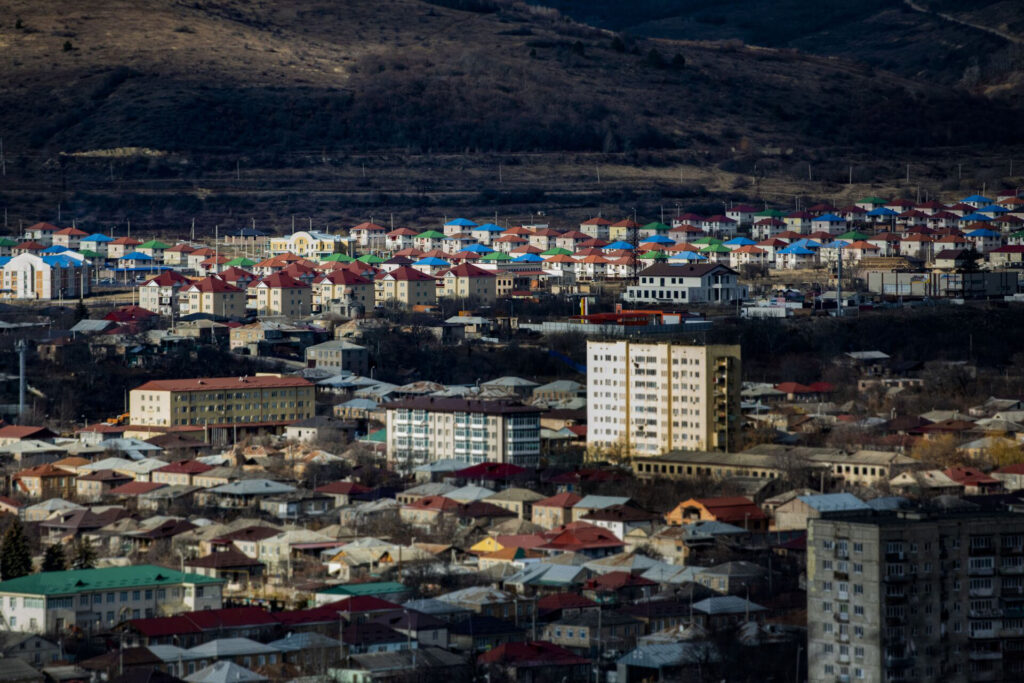
Russia drew the funds for the construction of housing not only from its federal budgets. In 2011, the construction of the Moskovsky microdistrict with the streets named after Medvedev and Putin was completed in Tskhinvali, on the account of Moscow’s funds.
In total, about 2 billion rubles were allocated for the reconstruction of South Ossetia from the Russian capital’s budget. However, despite the large investments, there is still a shortage of housing in South Ossetia, with more than 1,000 families on the waiting list to receive a home in 2020.
According to Soslan Dzhusoev, during the reconstruction of the city, the considerations of the architectural style often faded into the background. “To my deepest regret, when the city was being restored, the architectural coherence was not taken into account. Private houses followed standardized restoration projects. Now, the restored houses noticeably stand out and do not fit in,” says Dzhusoev.
Many old buildings and historical sites were destroyed during the 2008 conflict. 300 meters from the Parliament building, there is the Jewish Quarter which has been known since the 13th century and contains one of the oldest synagogues in the Caucasus region as well as other historic buildings. The area was damaged in the 90s and was almost completely destroyed in 2008. New townhouses have been built there now.
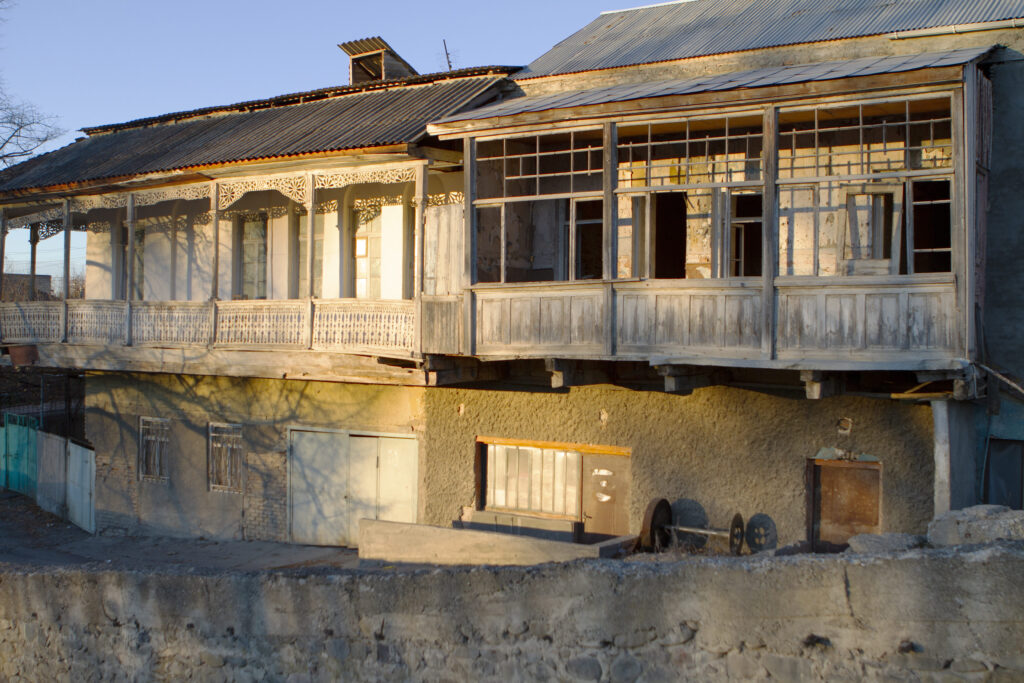
THE EMBASSY AND UNIVERSITY
Since 1932, the South Ossetian State University has been operating in Tskhinvali. In August 2008, its main building was hit by a shell and burned down completely. “We clustered in the student accommodation for a very long time, we conducted classes there for several years. The rooms were converted into lecture halls. We reduced the duration of the lessons because there weren’t enough rooms,” recalls Irina Kelekhsaeva, a lecturer at the South Ossetian State University. The new university building was opened only in 2018.
The new building of the Russian embassy was built four years earlier. In the first years after the war, it was placed on the premises of the former Sberbank branch. By 2014, a new group of buildings was opened close to the Second Putin Street, where the residents of the partially recognized republic with Russian citizenship can vote in elections.
One of the first buildings rehabilitated after the 2008 war was the railway station, according to Murat Gukemukhov. During the Soviet times, Tskhinvali and Gori in Georgia were connected by a 33-kilometer railroad. After the war in the 1990s, the railroad’s operations were suspended. There is now a bus parking site in the railway station square.
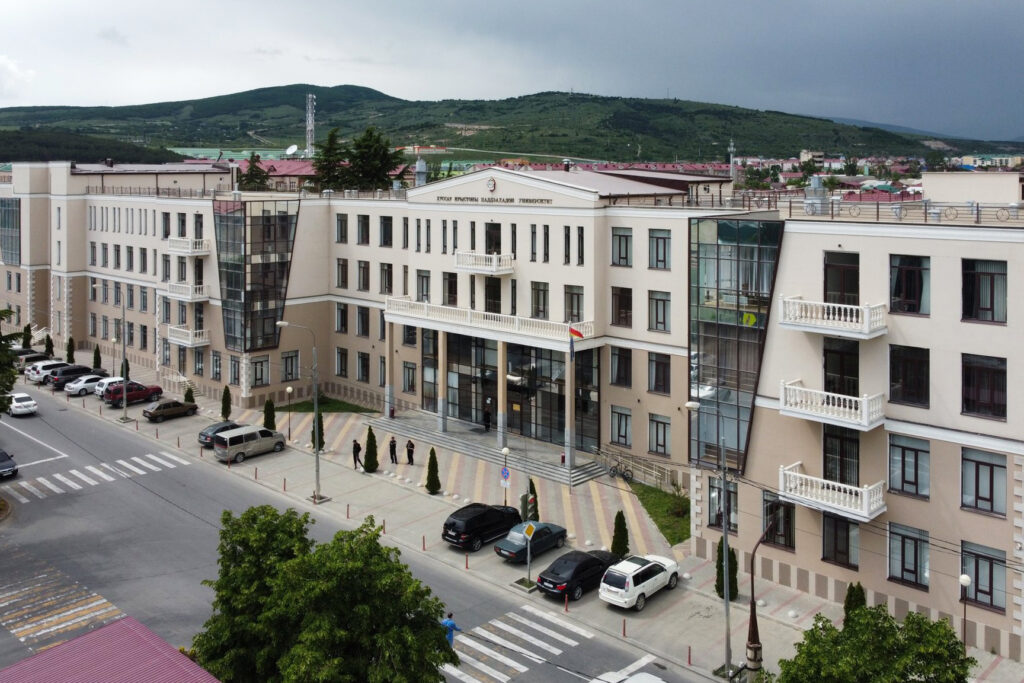
NEW ECOLOGY
The 2008 war left a serious imprint on the South Ossetian ecology.
Due to “borderization,” the environmental cooperation between South Ossetia and Georgia completely stopped. “There is a chestnut forest on the very border with Georgia. It stretches across the territory of two districts, and it is sick. Neither we, nor they can carry out proper research because the access to the border zone is limited,” says Zalina Gabaeva, a chairwoman of the environmental movement Green Alania.
The shelling destroyed many trees, while the constant sounds of gunshots and cannonades had a negative impact on the reproduction of songbirds. After the war, people held on to the residual weapons which led to an increase in poaching. “If people have weapons in their hands, the weapon always asks for something. There are often shooting rounds for chamois, deer, and bears which due to the unauthorized hunting after the war were included in the Red List,” notes Zalina.
“The city was very green. You could have walked all over it and remained in the shade, not a single ray of sunlight would fall onto you. On August 13, when I arrived, most of the trees were gone: either the crown was cut off, or they were completely felled… Before the war, a nightingale sang almost in every yard. Now, you can hear them once or twice during the summer,” says Zalina Gabaeva.
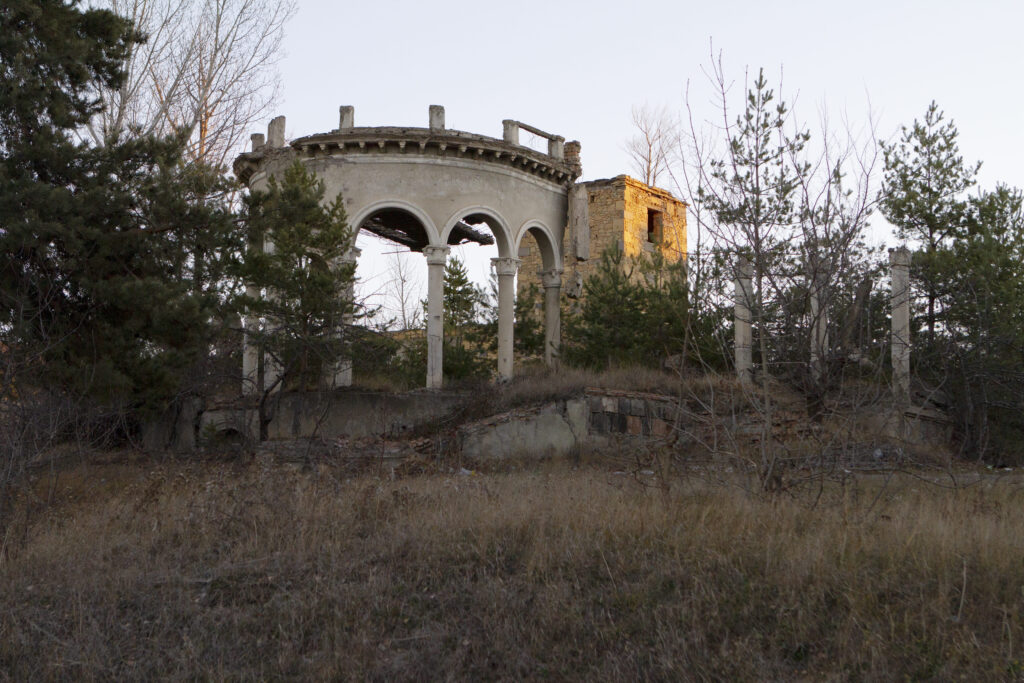
34 THOUSAND REFUGEES
The economic difficulties and continued armed conflicts led to a sharp population decline in South Ossetia. In total, the population of the republic almost halved between 1989 and 2015—from 98,000 to 53,000 people. Many left in the run-up to the 2008 conflict. The Russian Prime Minister at the time, Vladimir Putin, stated that between August 2 and August 9, about 34,000 refugees from South Ossetia came to Russia. Back then, it was almost half of the population of the partially recognized republic.
Before the conflict in 2008, there were mass evacuations of people from Tskhinvali. They went mostly to Vladikavkaz—the administrative center of the neighboring North Ossetia. “There were buses for everyone in the city center, quite a lot of them. People, having learned from their experience, packed up and left for Vladikavkaz; they were mostly women with kids. We have that city as “Point B” where we hide during escalations, ”says Inga.
“Of course, this is a colossal outflow of people,” says Soslan Dzhusoev, a former adviser to the President of South Ossetia, commenting on the mass emigration. “90–95 percent left for Russia, of which the vast majority settled in North Ossetia. Now, there are a few times more South Ossetians there than in South Ossetia itself.”
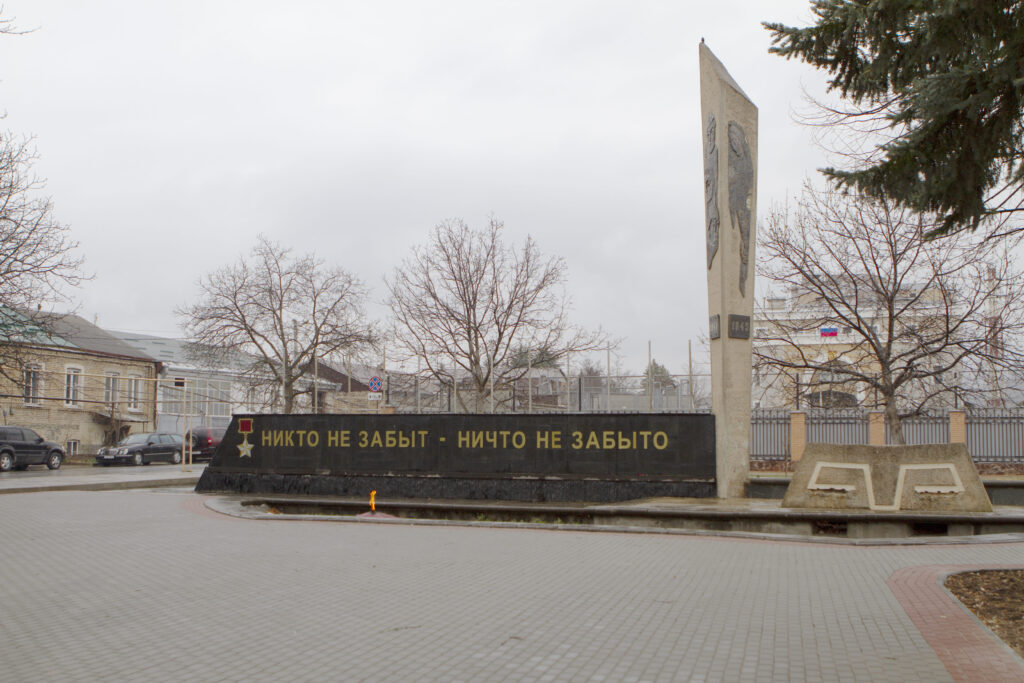
Accession to Russia
During the war in 1992, the first referendum in South Ossetia took place. It posed two questions: about independence and about “reunification with Russia.” Over 99 percent of the population voted in favor of both options. “The electorate simultaneously voted to acquire sovereignty and to join Russia, although these are two opposing desires. The logic is that they didn’t care where to go, as long as it was away from Georgia,” Murat Gukemukhov believes.
As the heads of the occupied territories in Ukraine recently made statements about the accession of their regions to Russia, similar discussions spurred in South Ossetia again. On May 13, former President Anatoly Bibilov announced a new referendum, a few days before his defeat in the presidential election.
Despite the fact that the new president of the partially recognized republic suspended the decree to initiate a referendum, Russia’s State Duma spoke about a possible date to hold it—the country’s “single day of voting” on September 11, 2022.
“Most likely, the accession of South Ossetia to Russia won’t change much in people’s lives. If we look at Tskhinvali, with all our problems and shortcomings, people here live better than in the 99 percent of Russian cities of comparable size. Here, the level and quality of life is better because elections where the President and Parliament get changed take place regularly,” says the former presidential adviser Soslan Dzhusoev.
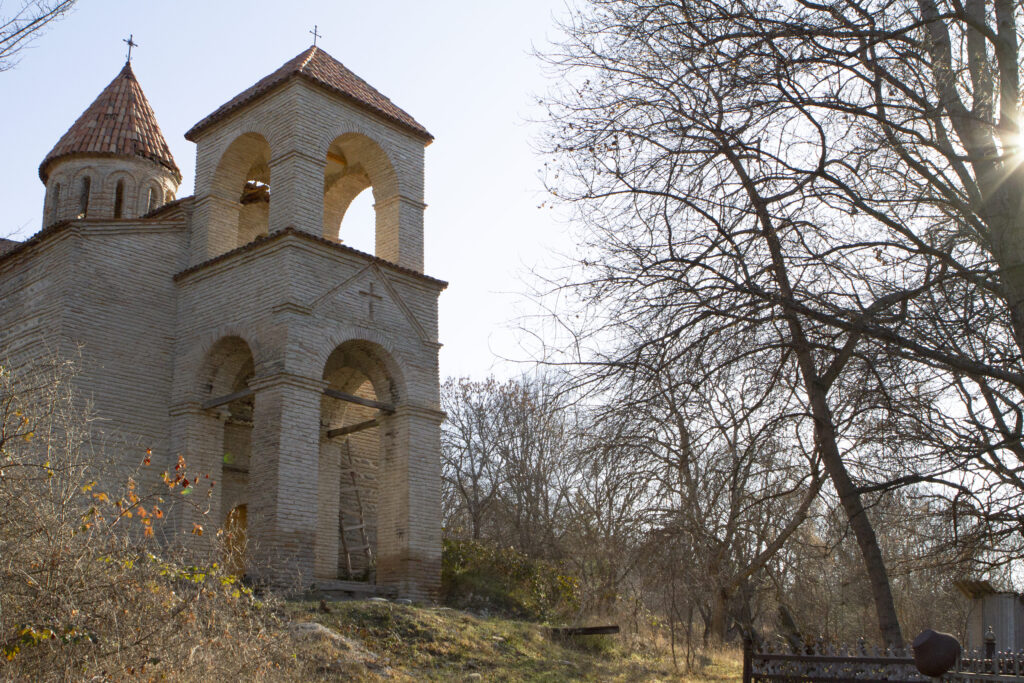
“We are seeing a very strange thing when a small society tries to build a democracy under the protection and with the money of a dictatorship. Wherever the dictatorship tries to interfere in its internal affairs, the brakes are pulled. The locals see what happens in Russian courts, they see what happens with those who participate in unauthorized protests. In South Ossetia, there were unauthorized actions during all of the elections. In the end, turns out that the amount of democratic freedoms in South Ossetia is greater than in Russia,” says Murat Gukemukhov.
The outcome of a possible referendum to join Russia is not self-evident to the authorities. According to PYL’s interviewees, the elderly population are the ones mostly in favor of the process. Young people, on the other hand, hold the opinion that preserving the current status might provide the locals with greater civil liberties than in Russia.
Inga left Tskhinvali back in 2012 to enroll at a Moscow university. After the start of the war with Ukraine, she left Russia. Her relatives continue to live in Tskhinvali.
Economic difficulties and war are not the sole reasons for mass emigration. “After 2008, the South Ossetian authorities have been building a system that imitates Russian patterns. This is unbearable and leads to people starting to suffocate. In a small society, the distance between a person and the state is very small. A person is literally at an arm’s length from the state. It is much harder to endure the deviations from the democratic norms here,” says Murat Gukemukhov.
Author: Nikita Kuchinsky
You may also like
What do we know about the Ukraine recovery plan
How much can it cost and which countries will be participating
5 stories about how Ukrainians are rebuilding their ruined homes
Reportage from Bucha, Irpin and Chernihiv region
ARCHITECTS IN THE SHOES OF PSYCHOLOGISTS AND THE TROUBLE WITH THE NORMAN FOSTER’S PLAN
Main thoughts from the conference The Reconstruction of Ukraine. Ruination / Representation / Solida

